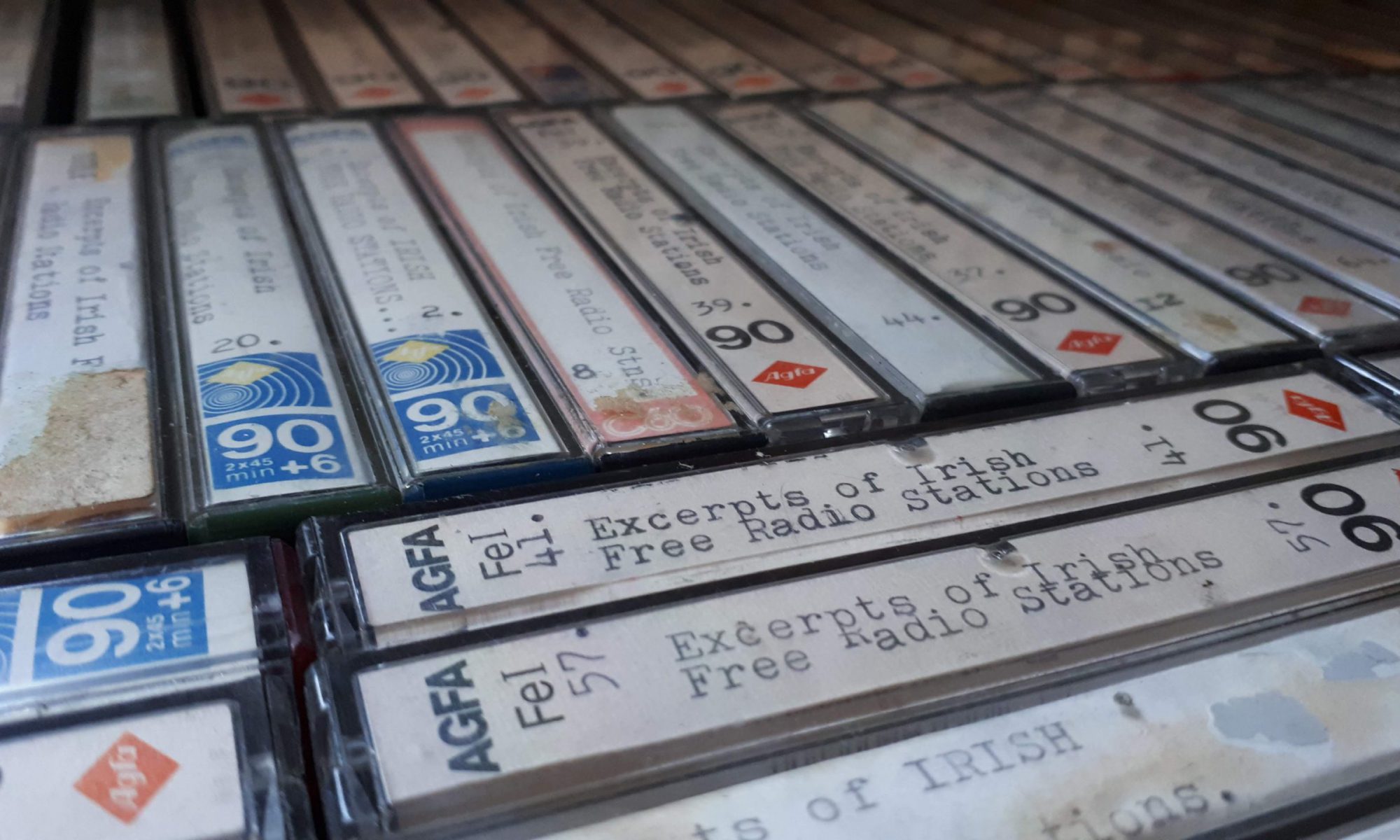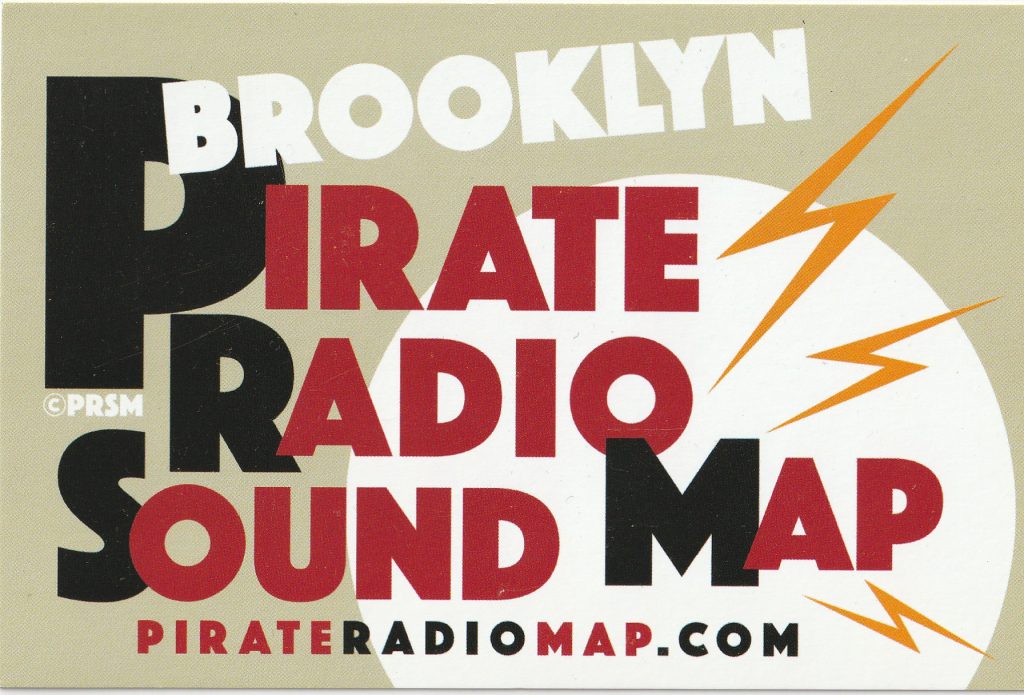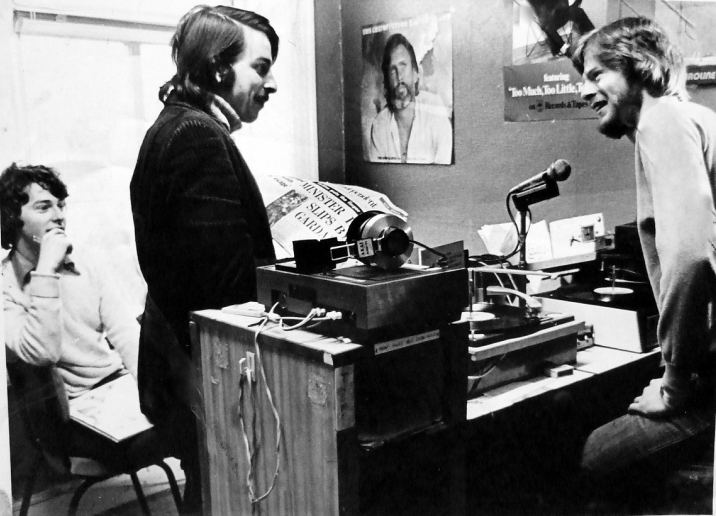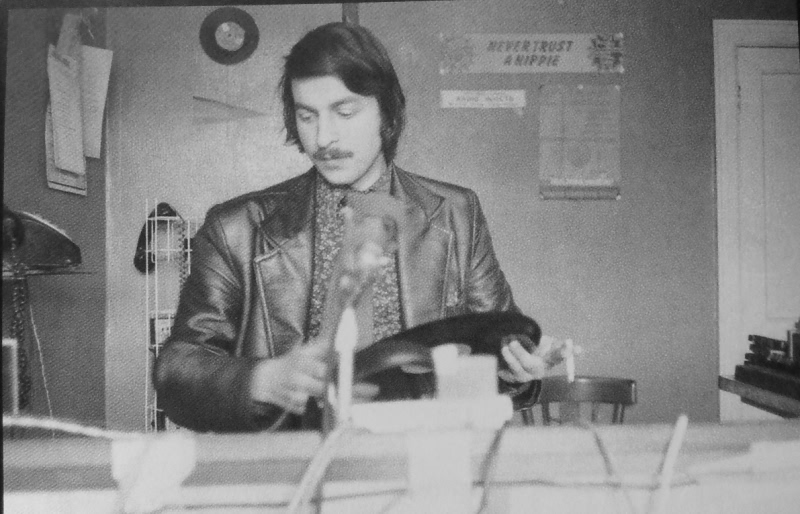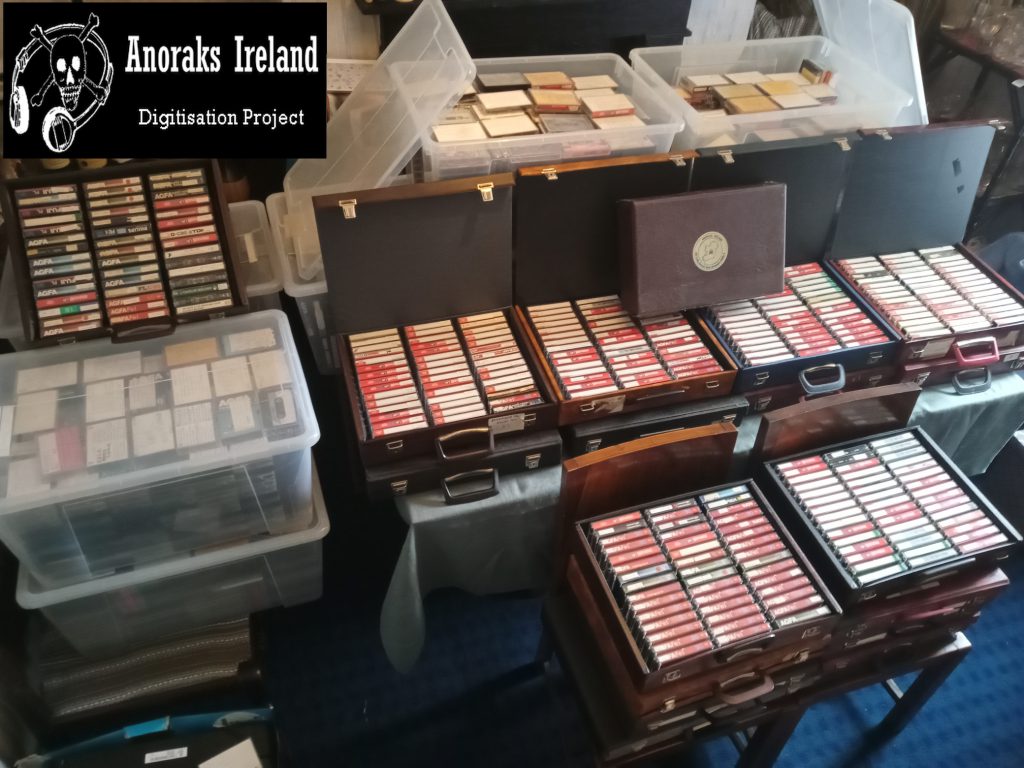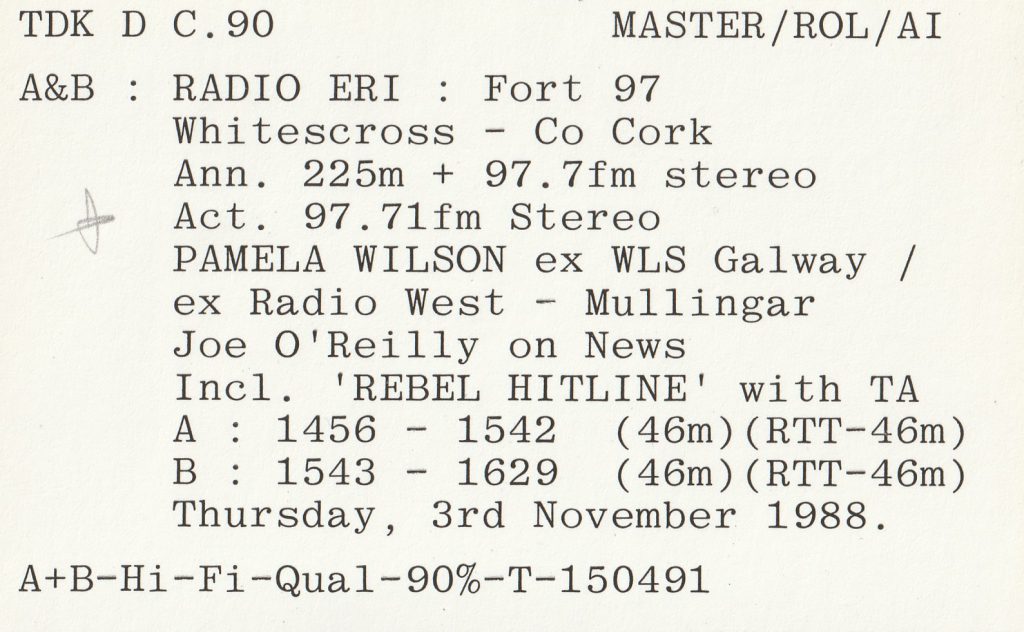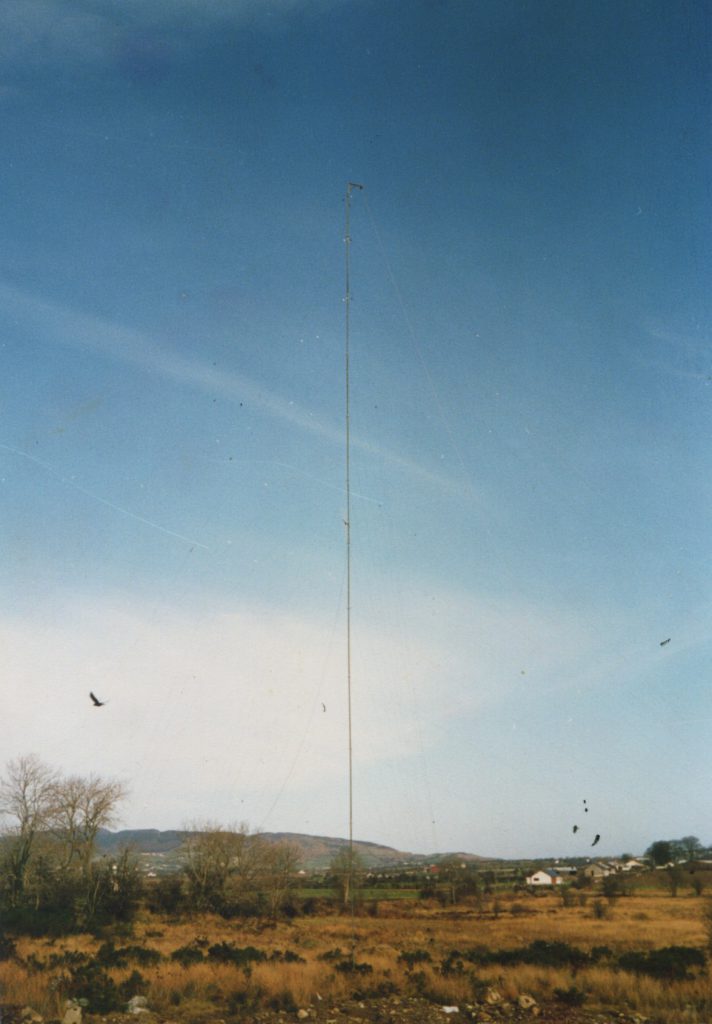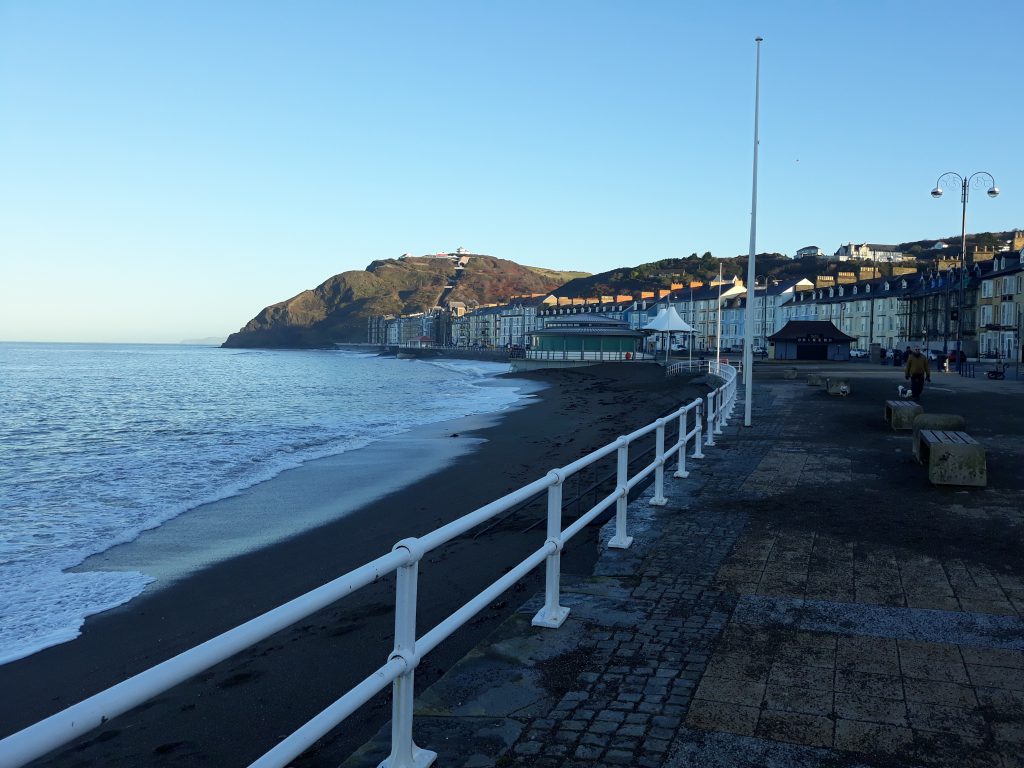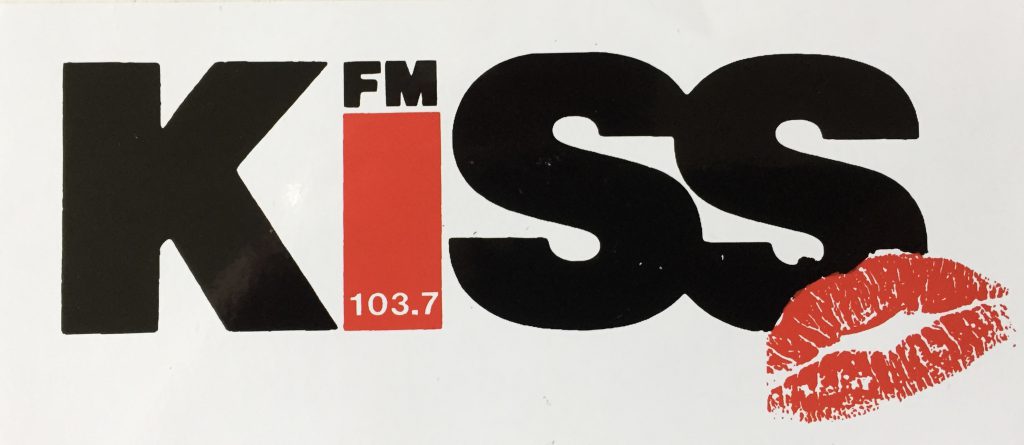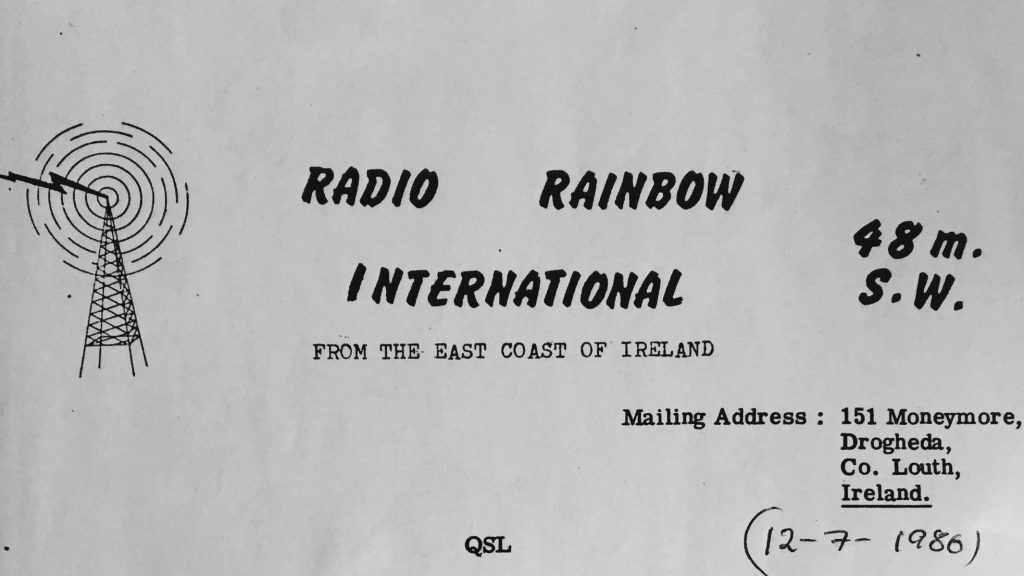Podcast: Play in new window | Download
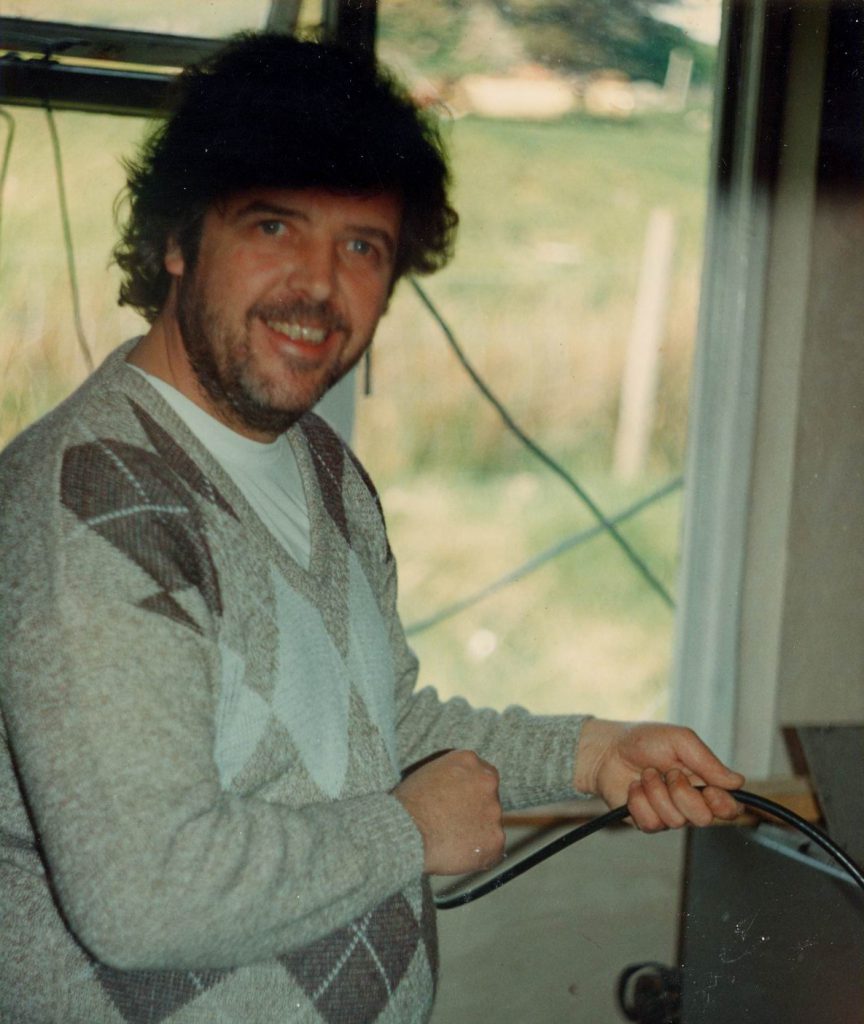
It is with great sadness that we learned today of the death of Paul Barnett, aka Paul Burbank or Paul Bentley following a battle with cancer. Paul was the operator of long-running AM pirate Radio North from Donegal and previously ran another station from that county, WABC. We thank Ian Biggar for writing this tribute for Pirate.ie.
I first got in contact with Paul in late 1987 when I heard his station, WABC on 107 FM back home in the west of Scotland. I received a friendly letter from Paul giving full details of his radio station that was broadcasting from north Donegal. Paul was from Mansfield in the English midlands and had moved with his Irish-born wife and family to set up a business in Coleraine. With Paul’s background in pirate radio it was a given that he would start a station and thus WABC was born, aiming its signal towards Coleraine and the Causeway coast.
WABC built up a strong audience over the next year, but like others had to close with the introduction of the broadcasting bill in Ireland on 31st December 1988. However, with the continuation of Radio North, Paul took the initiative and put WABC back on the air in mid June 1989. The station was now located in the family home in Greencastle.
We visited the station in May 1990 when Paul was running two formats, namely WABC Gold on 101.2 MHz and WABC Hot Hots on 101.5 MHz. It was always great to meet Paul as his enthusiam for radio was always infectious. I often was able to listen to both stations back at home on the west coast of Scotland.
In March 1991 I received a note from Paul saying that due to family commitments he and his family were returning to Mansfield. Paul then got involved with commercial radio with Gem AM in Nottingham and was a regular presenter. However, by the late 90s Paul was back in Donegal and running Radio North on 846 kHz and in time brought back WABC. However, his time was focused on Radio North which continues its format of country, oldies and religious programming on 846 kHz. Let’s hope Radio North can carry on and therefore continue Paul’s legacy.
RIP Paul and thank you for playing your significant part in the Irish era.
The recording is of the announcement by DJ Steven Lynch of Paul’s death on Radio North on Friday 27th October 2023. It is courtesy of Neil Sweeney.
